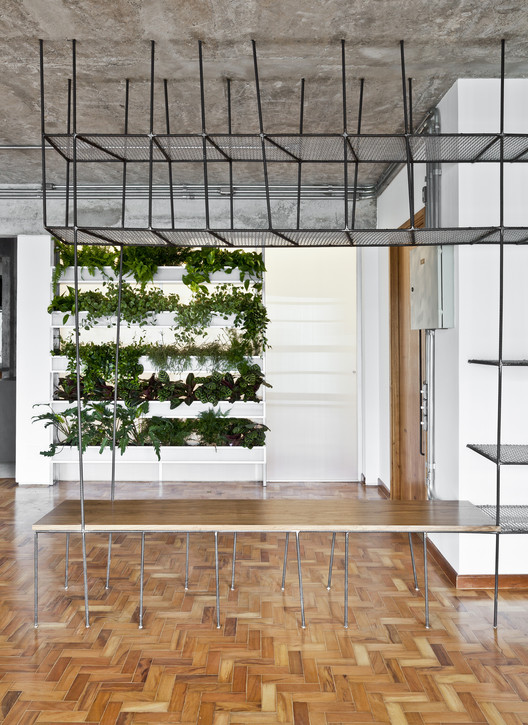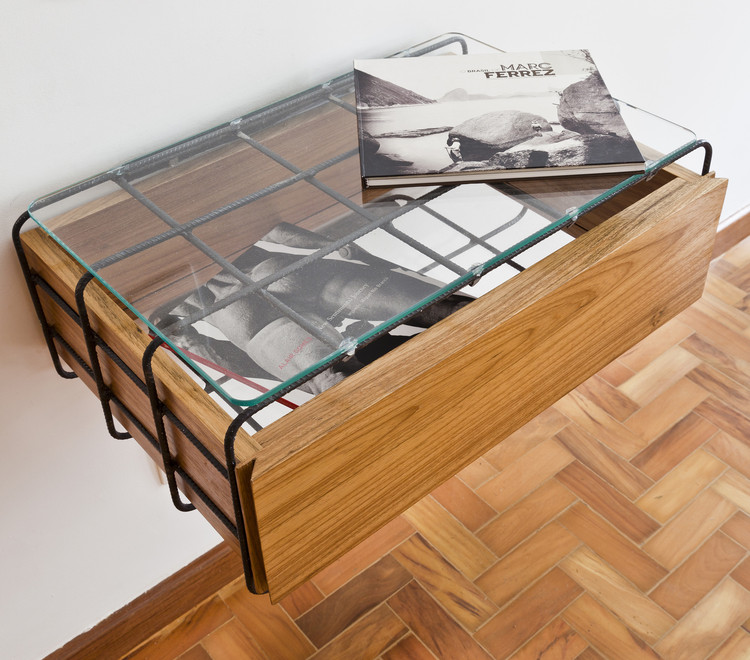
-
Architects: Zoom Urbanismo Arquitetura e Design
- Area: 150 m²
- Year: 2015
-
Photographs:Maíra Acayaba
-
Manufacturers: Ricardo Bezerra da Costa, Visual Mobile

Text description provided by the architects. In order to redistribute the spaces in this 60’s apartment, the renovation brought down much of the inner walls, to attend the needs of its new inhabitants. The demolition highlighted the glass frames that run through the whole facade of the apartment, where is located the social area. The luminosity, coming from the floor-to-ceiling windows, crosses all the social areas of the place, making the space - now wide and integrated - filled with natural light.

The fluidity and privacy between the rooms are fundamental, since the residents work from home and also like to receive guests. From this premise, three axes were created: a social, a service and a privative.

The living, dining and office areas make up a social area along the glass facade. A concrete counter integrates the social area with the service area: the continuous furniture has two different heights, and can be used as a dining table or kitchen counter. At the end of this concrete counter, the large windows and a concrete bench bring the feel of a balcony, a transition space that connects the service axe to the intimate area, linking the two suites.

The vertical garden, installed on a polycarbonate alveolar panel, closes the toilet and provides a different luminous interaction, preserving the privacy of the toilet's interior and keeping the luminosity that comes through the living room window. From the toilet, you see the outside light over the shadows of the garden. The same light effect and translucency happens in the bathrooms of the suites, where the partition walls were replaced by frosted glass.

Materiality is essential in the project: materials are used raw, explicit. It takes part in the small details, in the varied items designed in a personalized and tailor-made way. This materiality shows up in other contexts, in the bathroom, the towel rack and the toilet paper holder are made with the same copper tubing. Or as the rebar that appears in the furniture as a shelf and nightstand, and also in accessories such as door handles and lamp holders. The electrical and hydraulic installations, made of aluminum ducts and copper pipes, bring an industrial ambience to the project.

Existing pillars, beams and slabs have been peeled, revealing the concrete. This material is reaffirmed and reproduced in the new elements such as countertops, the main suite bathtub and a continuous bench that runs across the side of the apartment, crossing the two suites and the "porched" spot between them.


The cabinetry, finished in freijó wood, balances the sober tones and the brutality of the concrete. The shelves contour the living room and transform into the kitchen cupboard and laundry. In addition to these shelves, the rebar shelf offers plenty of space to accommodate the numerous books that the dwellers have.

In the rebar shelf, the horizontal bars provides an orthogonal rhythm, while vertical bars promotes asymmetry. The rebar shelf dialogs with the slab and the reinforced concrete beams of the environment, as if the concrete had been subtracted and left empty, resulting in the shelf.



























